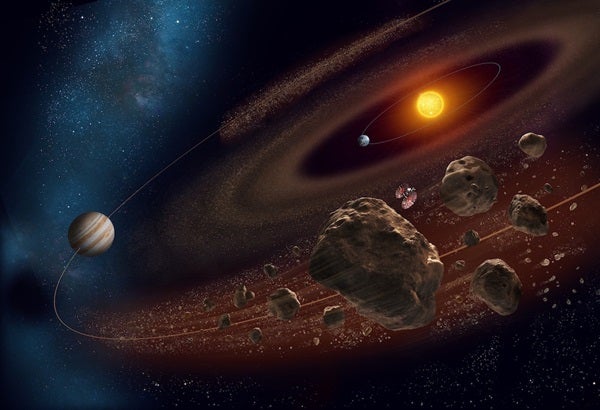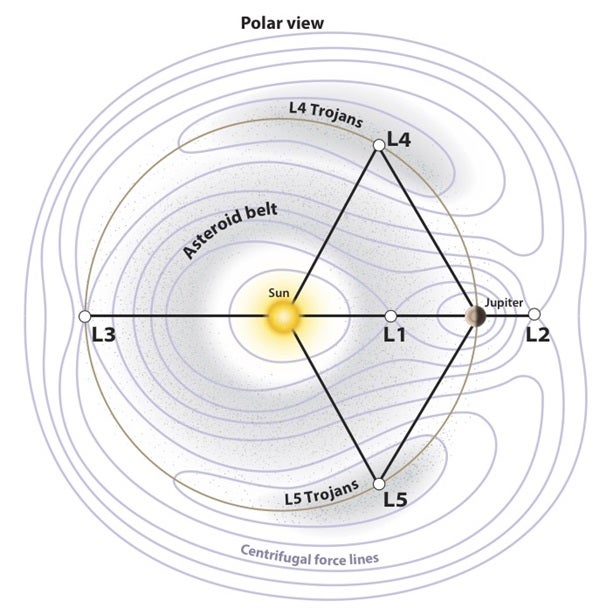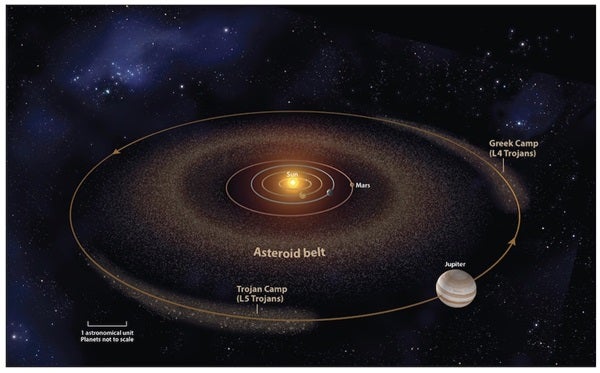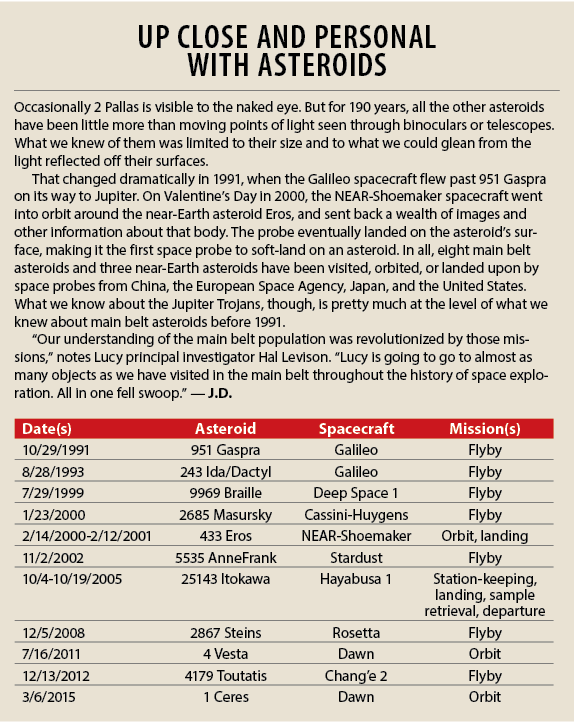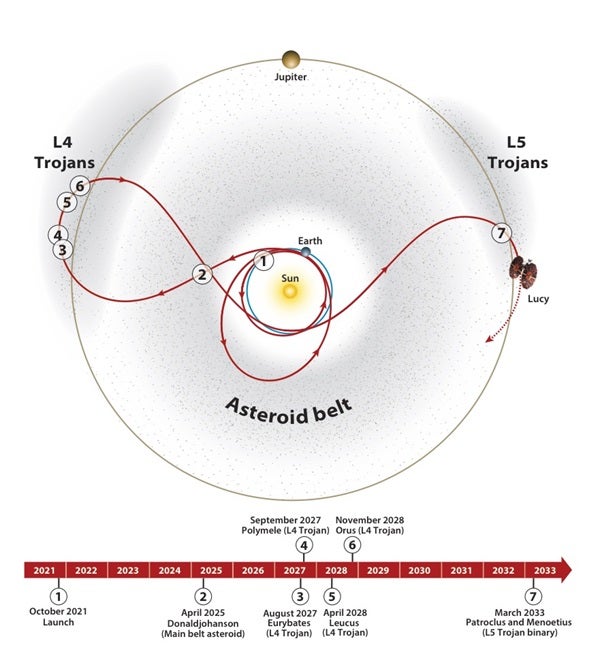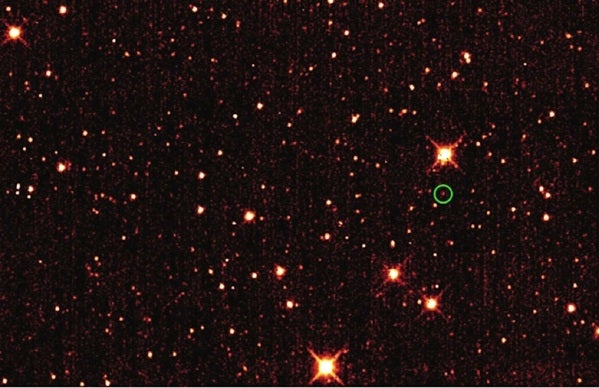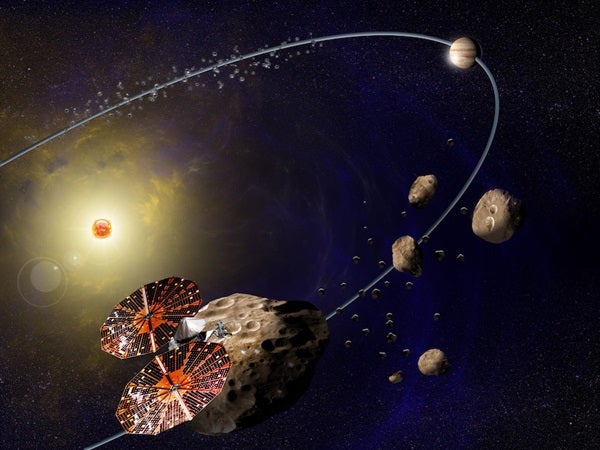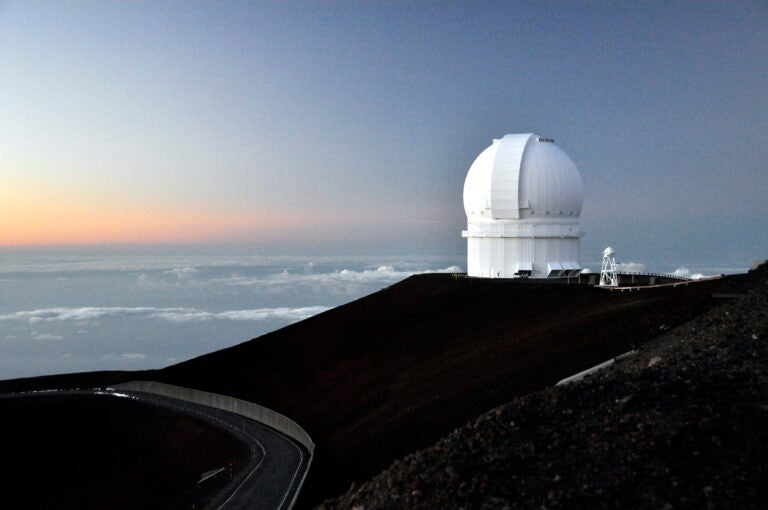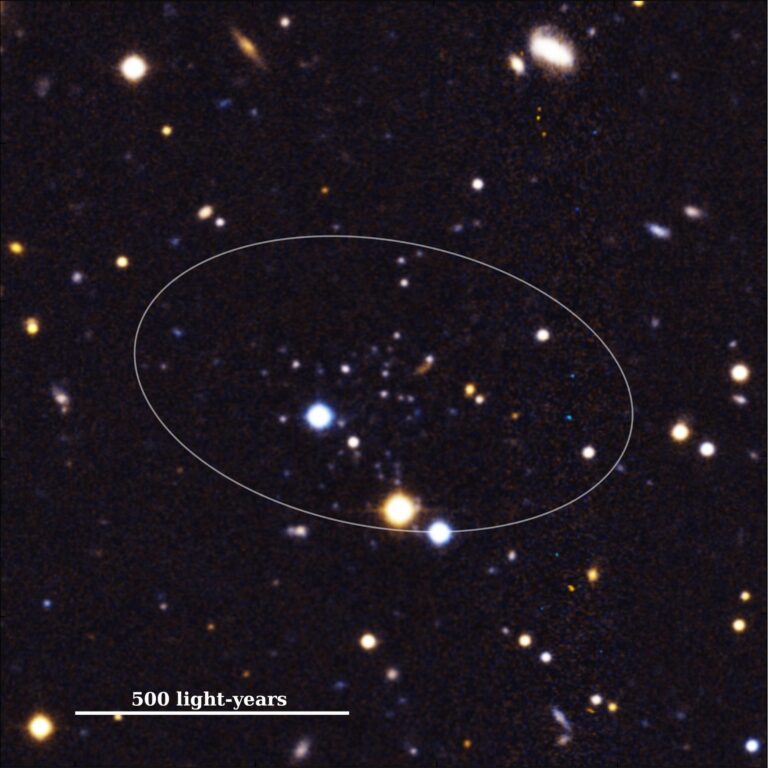For all we’ve discovered about Jupiter, its moons, and even its gossamer rings, we know precious little about the Trojans. Pioneers 10 and 11, the two Voyagers, Galileo, and Juno have all returned a wealth of data about the jovian system. Until now, though, the only way to study the Trojans has been from afar, with ground-based and Earth-orbiting telescopes.
That’s about to change. In 2017, NASA gave the go-ahead for a new Discovery-class robotic mission set for launch in 2021. The space probe will visit and explore six different Jupiter Trojans — and a main belt asteroid for good measure. So little is known about the Trojans that the data will certainly revolutionize our understanding of these ancient bodies. What the spacecraft uncovers could confirm some current theories of the solar system’s early evolution — or turn it all upside down.
The sweet spots
Every planet has several gravitational “sweet spots” where a relatively tiny body, like an asteroid, can maintain a fairly stable position in relation to two larger bodies, such as the Sun and the planet, or the planet and its moon. The gravitational pull between the two large bodies provides enough centrifugal force to keep the smaller object orbiting with them. These sweet spots are called Lagrangian points, named for Joseph-Louis Lagrange, who identified two of them in 1772.
L4 and L5 are the third points of two equilateral triangles drawn in the plane of the two large objects, and both of these points are usually quite stable. The base of the triangle is the line between the large objects, say, the Sun and Jupiter. The other two sides of the triangles are the lines from each large body to points lying about 60° ahead (L4) and 60° behind (L5) in the orbit of the smaller of the two large objects (Jupiter, in this case).
Jupiter’s Trojan asteroids
Jupiter’s leading and trailing Lagrangian points are stable over the age of the solar system. Like the Sargasso Sea — the enormous circular gyre in the North Atlantic Ocean — they have accumulated eons’ worth of objects. These bits of cosmic flotsam and jetsam are the Jupiter Trojan asteroids. They follow heliocentric orbits with nearly the same semi-major axis as Jupiter, about 5.2 astronomical units. (An AU is the average Earth-Sun distance of 483 million miles, or 778 million kilometers.) As they orbit the Sun, the Trojans tend to move closer to, or farther from, Jupiter. The planet’s gravitational pull accelerates or decelerates the asteroids, causing them to librate — or oscillate — around the L4 and L5 points. This shepherds the Trojans into two elongated regions around those points. Each region stretches about 26° along Jupiter’s orbit (a physical distance of about 2.5 AU), and is about 0.6 AU wide at the widest point.
Many Jupiter Trojans have orbital inclinations (or tilts in their orbital planes) larger than Jupiter, and some much larger. For example, the Trojans 2009 WN204 and 2010 BK101 have inclinations of 40.3° and 40.2°, respectively, while 2146 Stentor has an orbital inclination of 39.3°. Still, the gravitational dance between the planet and the Sun always brings them back to these two “sweet spots” along Jupiter’s orbit.
But despite the plethora of discovered Jupiter Trojans, we actually know relatively little about them. Most of our observations have been made with Earth-based telescopes. And although astronomers have discovered fewer Trojans in the L5 cloud than in the L4 cloud, this could be a result of observational biases in their coverage.
Lucy in the skyAbout 3.2 million years ago, in what is today the Awash River valley in Ethiopia, a small apelike creature died. How it happened is unknown: Perhaps she fell from a tree, or perhaps she was on some journey and lost her way. But there she lay, parts of her skeleton lost to the wind and rain. Rocks, dirt, and volcanic dust covered her bones, layer after layer, as millennia passed.
Now, a spacecraft bearing her name will journey into the sky in search of scientific diamonds. It will take — to steal from another Beatles tune — a long and winding road to get there. But the results will be worth the wait.
For the Lucy mission, this is a second chance. The mission’s principal investigator, Hal Levison of the Southwest Research Institute (SwRI) in Boulder, Colorado, notes that a mission named Lucy was proposed once before. “There was a call in 2010 for new Discovery missions,” he says, “and one of the proposals then was for a mission also called Lucy.” This first proposal was based on the New Horizons spacecraft and had different targets, only one of which was a Jupiter Trojan. It was not approved.
When the next call for Discovery missions was made in 2014, Levison decided to “reboot” it with the same name but with a new purpose. “The people involved in the first proposal were rather distracted by New Horizons, as you can imagine,” he says. “I decided it would be a good thing to change the focus of the mission a little bit and really study the Trojan asteroids.” SwRI and NASA’s Goddard Space Flight Center in Greenbelt, Maryland, sought each other out to create the new Lucy proposal, with Lockheed Martin designing and building the spacecraft.
Lockheed Martin has a long and successful record building spacecraft for NASA, including the OSIRIS-REx asteroid sample-return mission, the 2001 Mars Odyssey orbiter, and the Mars InSight mission slated for launch in 2020. Tim Holbrook is the company’s deputy program manager for Lucy. The science team, led by Levison and Catherine Olkin, is based at SwRI in Boulder. The Goddard Space Flight Center is the NASA facility managing the project, with Keith Noll serving as project scientist.
Lucy’s Trojan targets are 3548 Eurybates, 15094 Polymele, 11351 Leucus, and 21900 Orus in the L4 Greek Camp, plus 617 Patroclus and its binary companion, Menoetius, in the L5 Trojan Camp. The spacecraft will gather data on the surface composition, surface geology, and the interior and bulk properties of the Trojan targets (plus one main belt asteroid named 52246 Donaldjohanson). And it will do it from close range. The Lucy team will also use the spacecraft’s radio telecommunications hardware to measure Doppler shifts — or changes in a signal’s frequency that are induced when an object is moving relative to an observer. As Lucy orbits a Trojan, minute variations in the asteroid’s mass concentration will cause the craft to slightly speed up or slow down. These tiny changes in speed will shift Lucy’s radio signal, allowing astronomers to deduce how much mass is required to account for the shift.
Two of Lucy’s three scientific instruments are lifted directly from New Horizons, and the third from OSIRIS-REx. The L’Ralph telescope, built by the Goddard Space Flight Center, is a color optical CCD imager and infrared spectroscopic mapper. The original on New Horizons was named for Jackie Gleason’s character in The Honeymooners television series. LORRI, a high-resolution visible light imager, is Lucy’s version of the LOng-Range Reconnaissance Imager aboard New Horizons; it is from the Johns Hopkins University Applied Physics Laboratory in Laurel, Maryland. The Thermal Emission Spectrometer (TES) is an upgraded version of the OSIRIS-REx instrument, built at Arizona State University in Tempe.
The long and winding road
Lucy’s journey to the Jupiter Trojans will be a long one, lasting nearly 12 years from start to finish. The current timeline calls for the spacecraft to launch in October 2021. Two flybys of Earth in October 2022 and December 2024 will slingshot the spacecraft through the asteroid belt toward the Greek Camp at Jupiter’s L4 region. In April 2025, Lucy will make a close flyby of 52246 Donaldjohanson, a main belt asteroid 2.4 miles (4 km) wide and named for the discoverer of the original Lucy — an appropriate first encounter!
A month later, Lucy will fly by Polymele. This 13-mile-diameter (21 km) object is probably also a fragment from an ancient collision. Then in April 2028, the spacecraft will visit Leucus, which is 21 miles (34 km) wide and very dark. The last L4 Trojan Lucy will visit is Orus in October 2028. Orus is about 32 miles (51.5 km) wide.
“That’s going to be a great encounter, my favorite!” exclaims Levison. “It’s at the end of the mission. We will have to wait, but it will be the highlight!”The science team had two objects of particular interest for the Lucy mission, Levison says. Eurybates, the first Trojan Lucy will encounter, is the only one on the team’s “must-visit” list. The other is Patroclus. “The fact that Patroclus is still a binary means that it is probably pretty pristine,” says Levison. “If either of the objects in the binary had suffered a large collision, it would have completely disrupted the binary. That’s why there are so few binaries in the inner part of the solar system.
“On the other hand, Eurybates is the largest member of a collisional family of objects,” he says. “So we are visiting a binary that is probably pretty pristine, and a guy that we know got the crap kicked out of it. Comparing those will be interesting in and of itself.”
The visit to Patroclus is a great example of the good fortune Levison’s team has had. “This object has an orbital inclination of more than 20°, and it just so happens that it will be crossing the plane of the solar system just as Lucy goes by,” he says. “It was pure luck. I’ve been studying celestial mechanics for 30 years, and the celestial mechanics gods are paying me back!”
Fortunately, Levison and his team are confident that Lucy is the perfect mission to help shed new light on these dusky diamonds in the sky.

